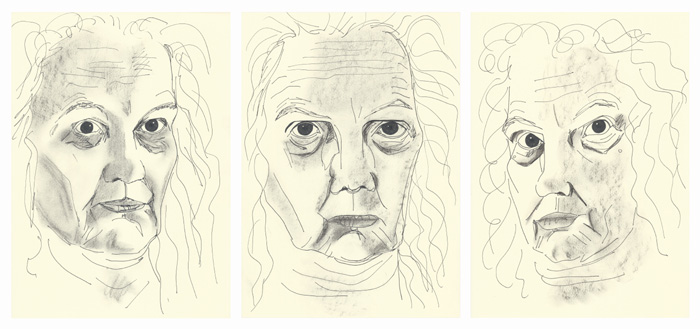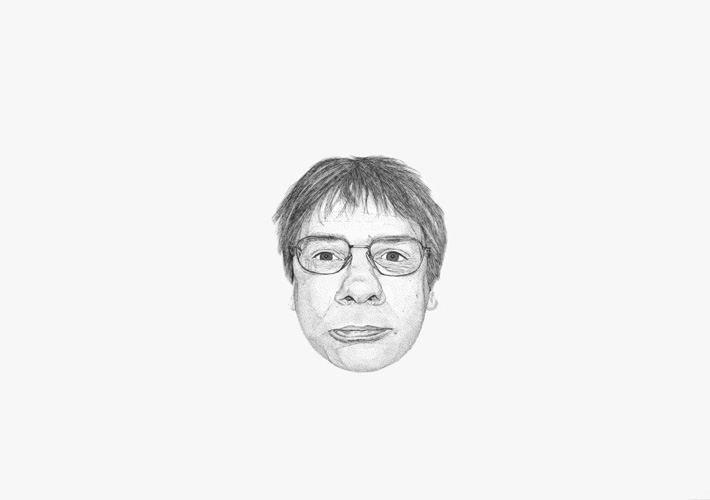Cally Trench and Nick Trench
Siblings Cannot Agree
Heseltine Gallery, September 2018
|
Siblings Cannot Agree: An exhibition of self-portraits and portraits by Nick Trench and Cally Trench, who are brother and sister. They are both artists and this was their second exhibition together. When Cally Trench came across two pencil drawings that she and her brother Nick Trench had made of each other over 45 years earlier, this rediscovery became the catalyst for an exhibition by the two artists at Oxfordshire's Heseltine Gallery in September 2018. |
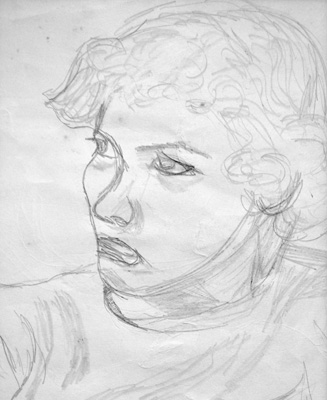
|
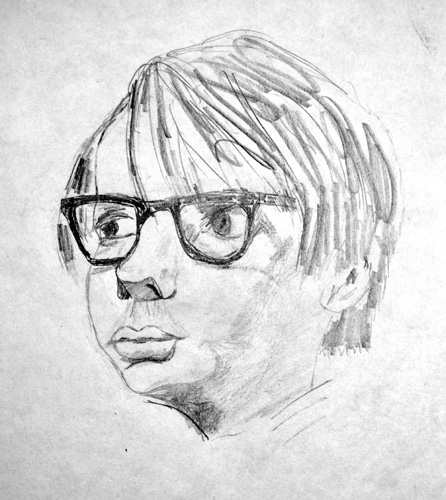
|
|
"It was years since we had made those drawings, but the character of each was still recognisable in the artists we had become." (Cally Trench) Siblings Cannot Agree showed self-portraits by the two artists and portraits of the other, both from the past and from more recent years, with paintings, drawings, photographs and animation films. The exhibition had interesting symmetry: work by Cally of Nick, by Cally of herself, by Nick of Cally, and by Nick of himself, both recently and in the past - eight possible approaches. It allows for a lot of potential conversations between the works. "At first glance, there's dissonance rather than cohesion: their work differs dramatically in technique and approach. Yet both inventively use paint, line or video to explore and record who they are and who they have become. I love the way the exhibition encourages the viewer to reassess their own sibling relationships as well as posing more general questions to do with identity and self. Having the show in a gallery linked to a school makes these questions even more pertinent: our siblings, whether we like it or not, have a great deal of influence and impact on who we each become." (Exhibition curator Tom Christy) The title of the exhibition, and the work shown, reflected a seldom-acknowledged phenomenon: that brothers and sisters can have a shared background, family and upbringing and yet end up with very different outlooks, visions and ways of doing things, as demonstrated by the two artists' contrasting approaches, ideas and techniques. This curious mix of commonality and difference is not uncommon with siblings. Siblings Cannot Agree was open 17th - 29th September 2018. The Opening Event on Sunday 16th September provided an opportunity to meet the artists. The Closing Event on Saturday 29th September included readings by both artists from their own writings. The Heseltine Gallery, Chenderit School, Archery Rd, Middleton Cheney OX17 2QR. The Heseltine Gallery, located on the intersecting borders of four of central England's counties, is the region's major community art gallery space and is attracting increasing attention for the quality and range of its exhibition programme. On the Chenderit School campus, it showcases the work of regional artists and craftspeople, as well as celebrating the achievements of students, through a busy programme of events. The gallery is run by The Friends of the Heseltine Gallery. Follow on Twitter @FOHGallery and on Facebook Friends of the Heseltine Gallery. |
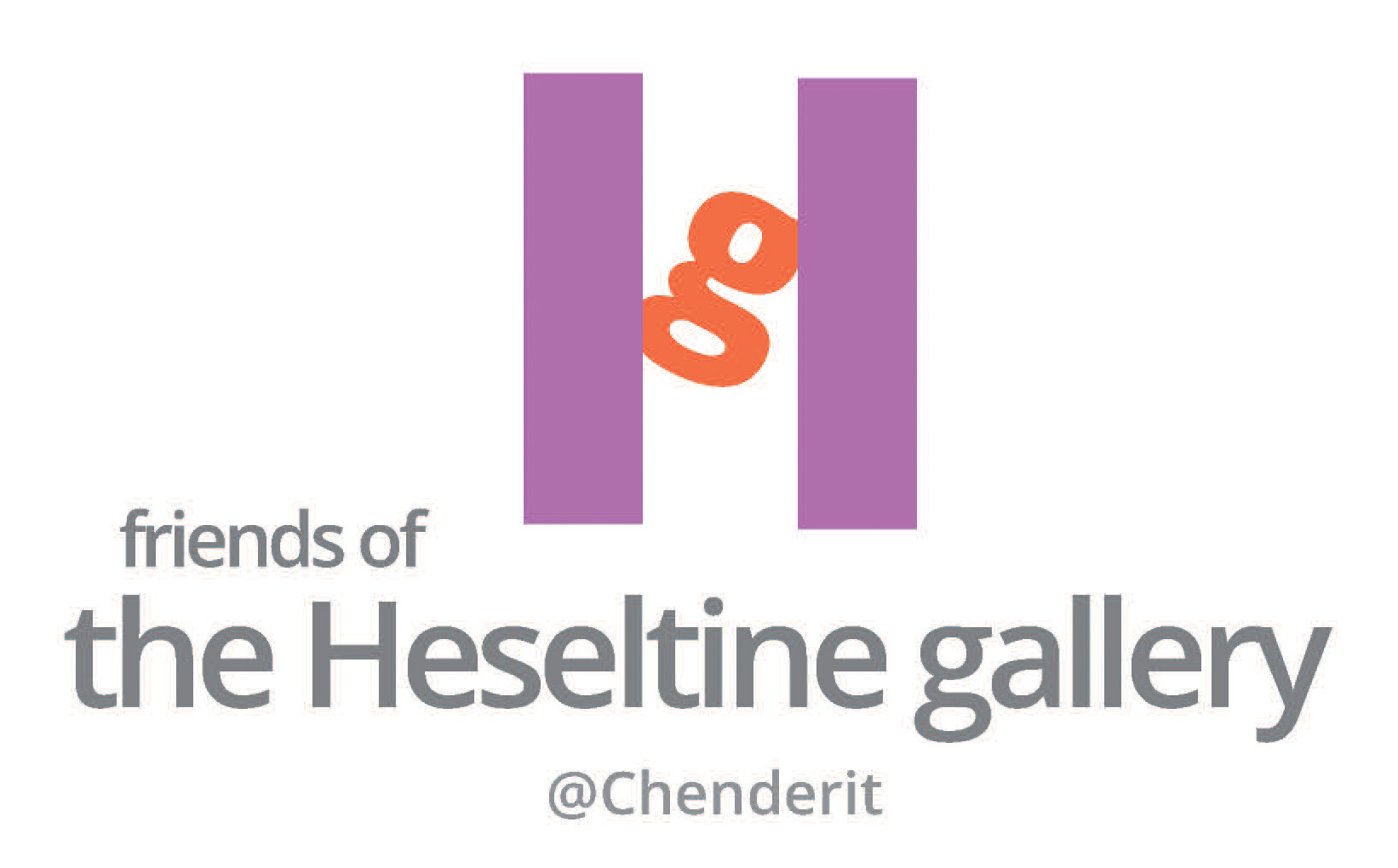 |
Nick TrenchNick Trench explores figures in different environments or treats them in different ways. Sometimes the figure may disappear entirely, perhaps merging into the surroundings or disappearing behind them. "One problem I have with conventional portraiture is in the attempt to 'fix' a personality as though this can be done objectively. For me, the most interesting portraits are those which convey a sense of uncertainty or even 'dissolution' as though a 'true' portrait can never be achieved, where the figure looks as though it might fall apart or disintegrate or become so attenuated, as in the work of Giacometti or Marlene Dumas, that it might disappear. I don't think about these problems in terms of identity because 'identity' always (artificially) wants to remove the essential person (behind the figure) from his or her environment. It could be argued that good portraiture is always in a fight with identity." (Nick Trench) |
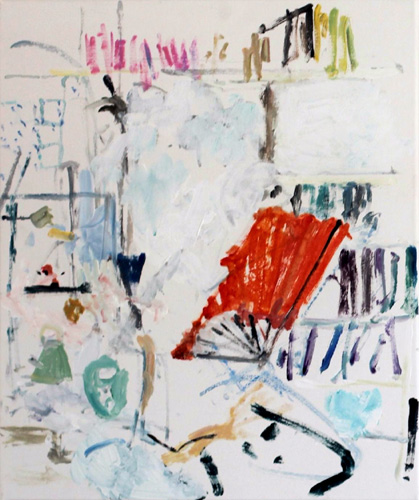
|
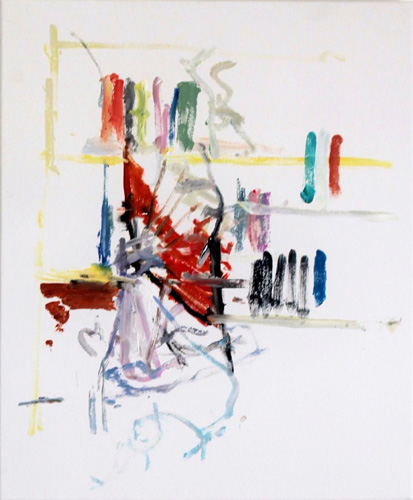
|
|
Nick Trench's focus is on mood and situation, rather than on identity and character, with recent drawings experimenting with distortion and double-vision of facial features. The Four Eyes paintings were prompted by the memory of his grandmother constantly calling him 'Four Eyes' when he first had glasses. |
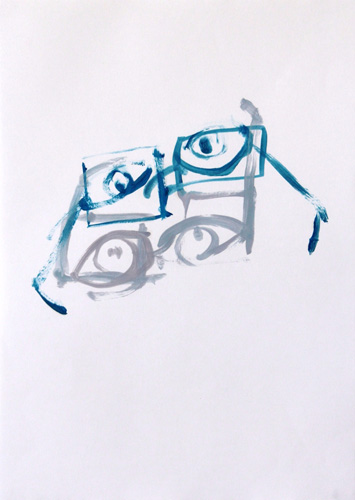
|
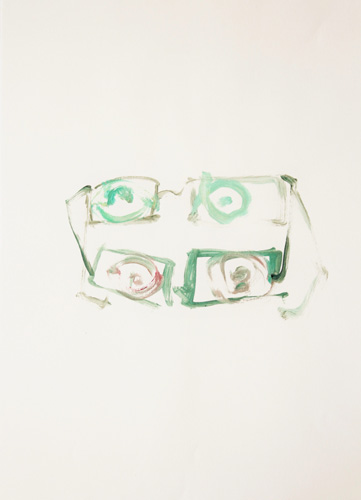
|
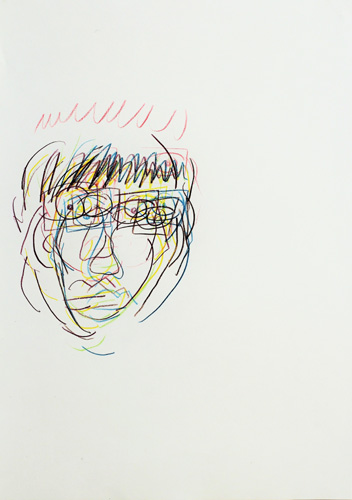
|
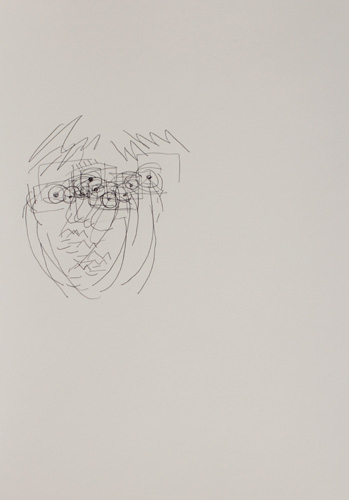
|
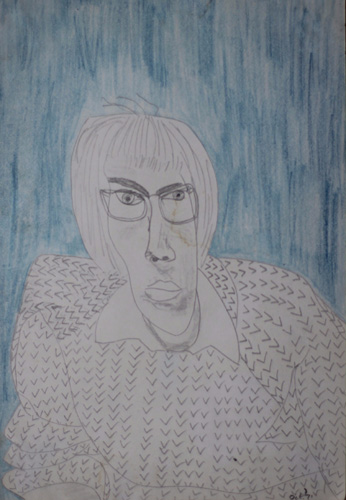
|
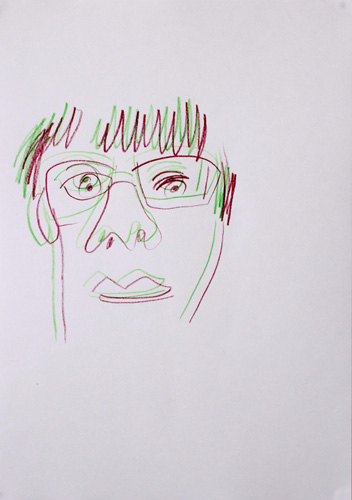
|
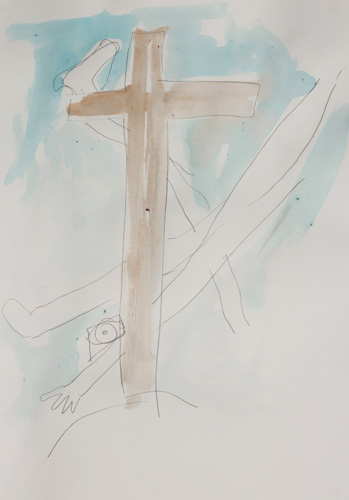
|
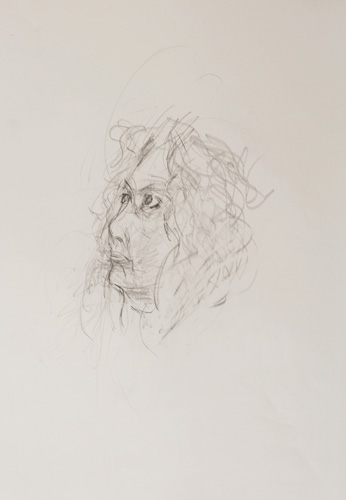
|
Cally TrenchCally's portraits of Nick Trench and self-portraits include diptychs, triptychs, collections of Feet and Hands drawings, and time-lapse films. For Cally, one aim of a portrait is to present to the viewer what they would not usually see if they met the person: a total openness and lack of pretence. In her Triptych drawings of herself, she gazes out at the viewer as if she has nothing to hide, with the intent and honest look we give ourselves in the mirror. |
|
Some of Cally's work in this exhibition related to viewpoint, and in particular to a sense of life and death. For example, her Face drawings (such as Nick T) are about looking down on someone who is lying flat on their back, as if they were dead. |
|
However, she uses a multiplicity of images - as diptychs, triptychs, collections of work (such as the Feet and Hands drawings), and time-lapse films - to approximate to the way that we actually see a person in continuous movement. This constant change is an indication of life. Cally believes that hands most obviously, but also feet, are unique, and reveal character as much as a face. Sometimes they reveal more because we are less likely to control their expression and movements. She is also concerned with how people respond physically to works of art, for example to the Hands drawings. Viewers tend to move backwards and forwards, towards the drawings to view the detail of individual ink marks, dots, lines, squiggles and cross-hatching, and then backwards to see the overall picture, in a physical engagement that is also very personal and private. |
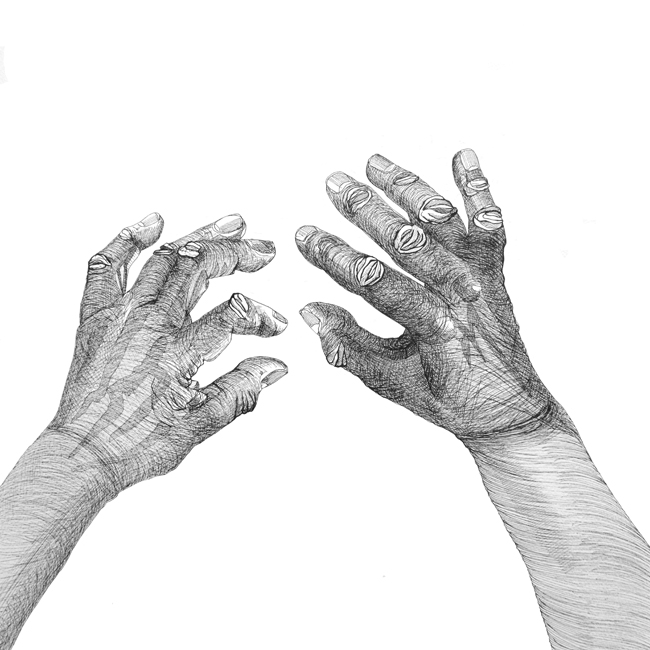
|
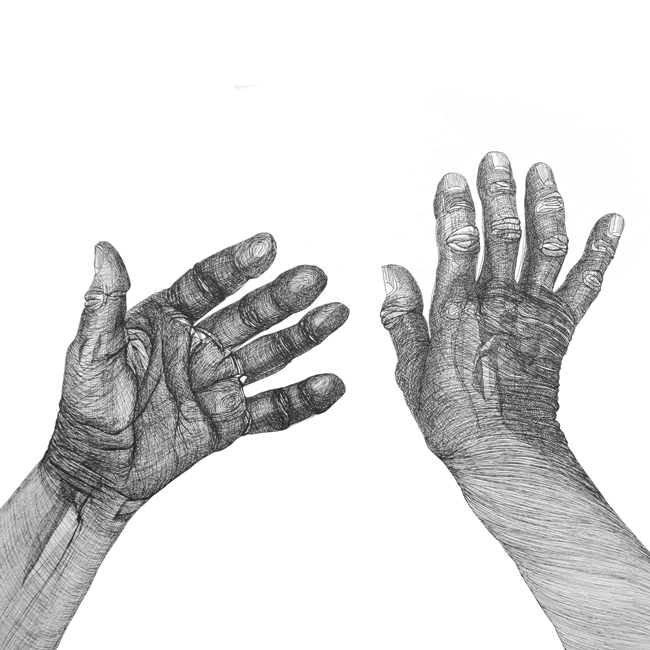
|
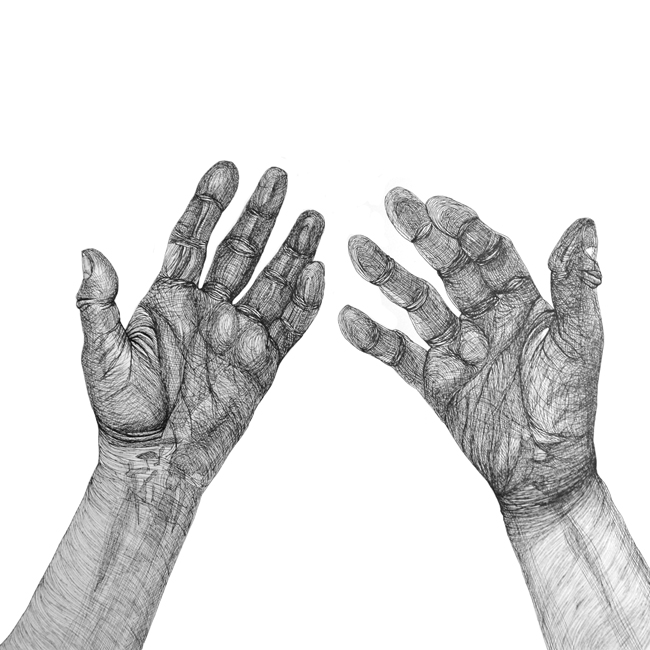
|
